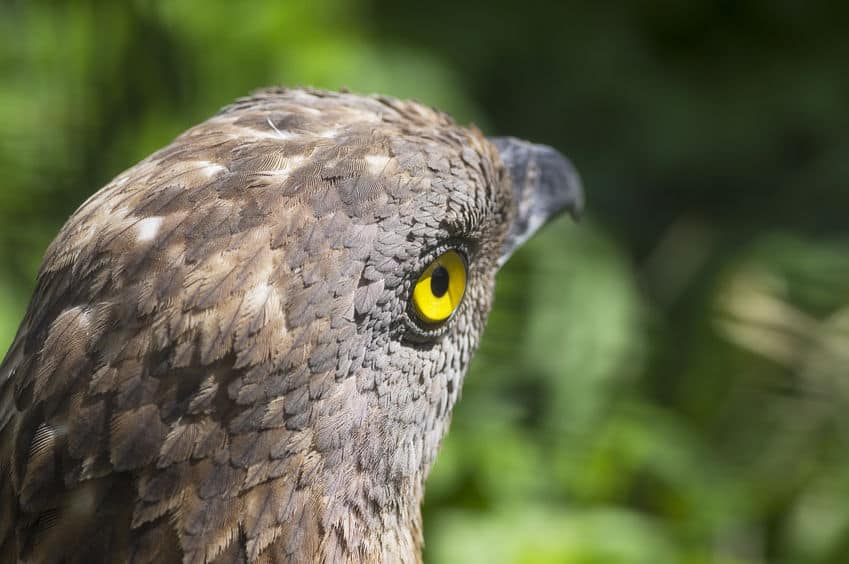Wasps are carnivores and prey on many insects and spiders. One colony will consume thousands of insects each season, but wasps are also preyed upon. Many animals will eat wasps, with some specializing in it. In many cases, it is the wasp larvae in the nest that these predators are attracted to. Unlike the developed wasps they don’t have stingers to worry about.
The most common predators of wasps and wasp larvae include:
Praying mantis, robber flies, dragonflies, spiders, honey buzzards, bee-eater birds, skunks, weasels, raccoons, bears, badgers, toads, and lizards.
Let’s take a closer look at these wasp predators.
Insects
There is no shortage of insects that given the opportunity will not hesitate to consume a wasp. These include praying mantis, dragonflies, and robber flies. Robber flies are so adept at killing other insects that also carry the name ‘assassin flies’. They will catch a wasp mid-flight. The robber fly attacks wasps by stabbing them with its proboscis, a sharp straw-like mouthpart, and then injecting its prey with neurotoxic enzymes that paralyze and digest the wasps from within. The robber fly is then free to suck out its victim’s insides through the proboscis.
Birds
Many birds will eat wasps including but not limited to bluebirds, blackbirds, warblers, starlings, wrens, magpies, and nighthawks. Some birds specialize in eating wasps such as bee-eater birds, which have mastered the art of discarding stings by bashing them against trees, and the European honey buzzard. The honey buzzard isn’t content to catch individual wasps. This bird will rip a wasp nest apart to get to the wasp larvae inside. It has thick head feathers and also releases a chemical that sedates wasps. Read more about these birds here.

Skunks, Racoons, Weasels and Badgers.
Many wasps make underground nests including yellow jackets. Skunks, raccoons, weasels, and badgers love grubs and prey on wasps, digging up their nests to consume the wasp larvae within. They do not appear to be bothered by the stings and will tear a nest apart in a matter of minutes. They have claws designed for digging and ripping and can smell out wasp nests very effectively.
Bears
Bears are well known for their love of honey but they are actually far more likely to be preying on wasps. They love the larvae in the wasp nests and can target nests that are above the ground in shrubs and on trees. They will take apart a wasp nest in no time.
Spiders
Spider wasps are ruthless predators of spiders, but spiders are not always the victims. Some spiders catch and prey on wasps. Once caught in a spider web they can easily become victim to a spider. Many queen wasps suffer this fate before ever having the opportunity to establish colonies.
Toads and lizzards
Some species of lizards actively seek out wasps including geckos. They love the wasp larvae and will eat through a wasp nest in order to get to them. If you don’t want wasps crawling around your house then geckos can be your friend. Toads will also happily consume wasps, although they don’t actively seek them out as geckos do.
